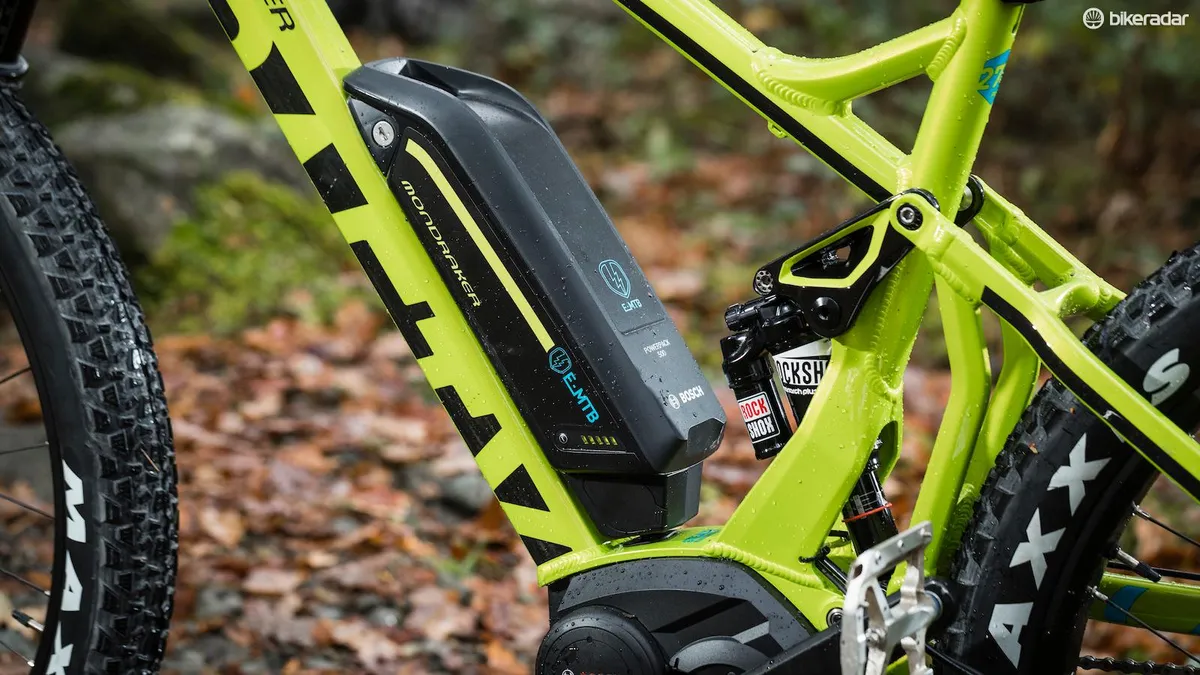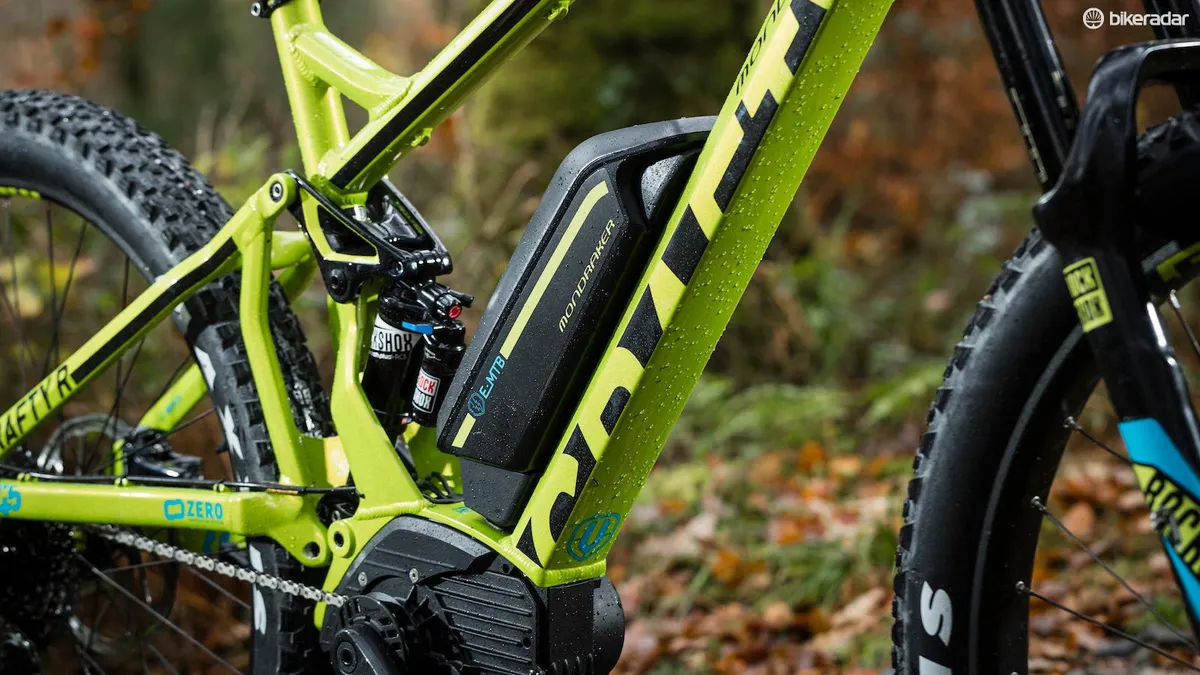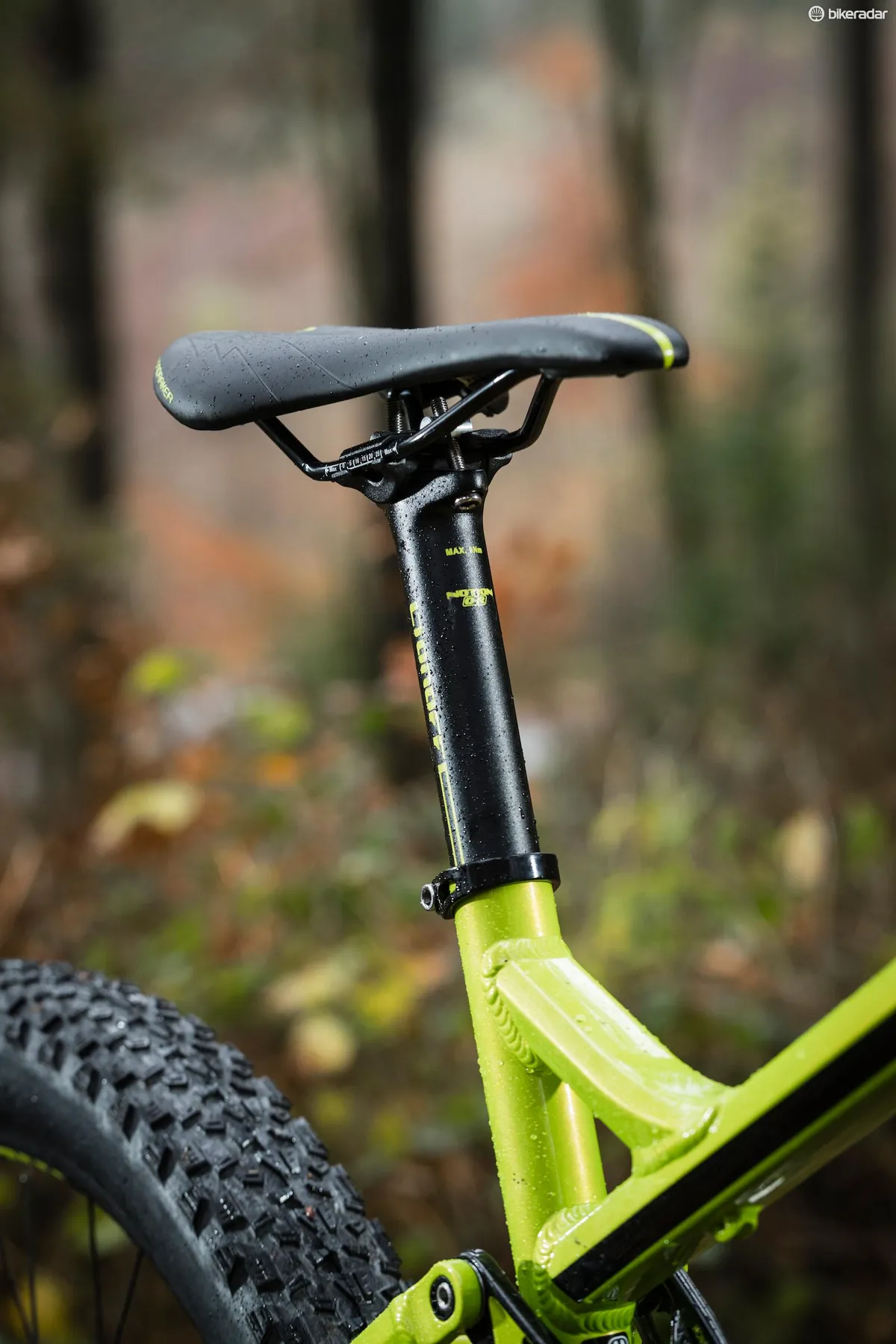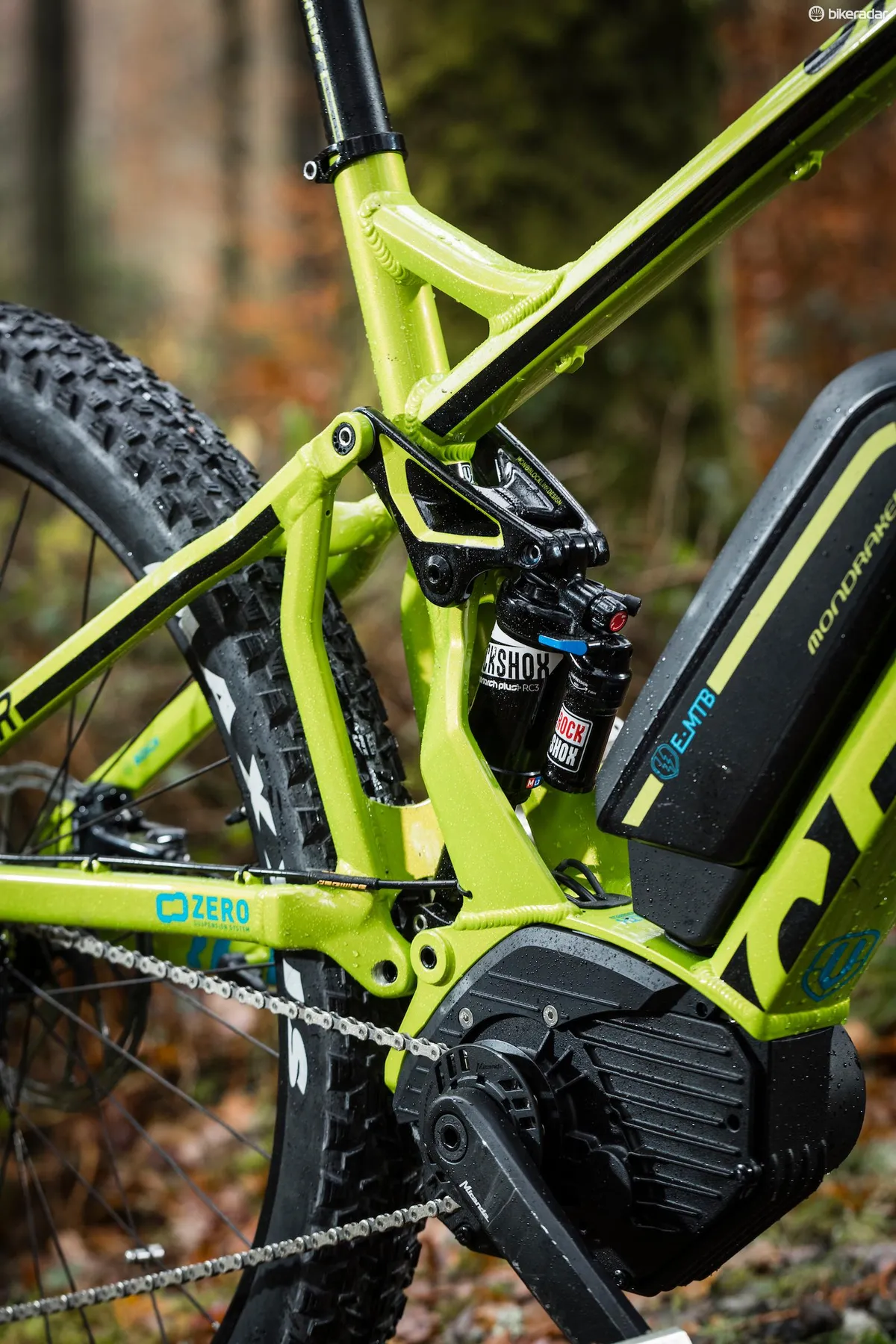People are an odd lot. On the one hand, humanity searches out challenges that demand complete commitment (scaling remote and dangerous mountain peaks) while on the other we like to make things as easy as possible (apps that order takeaway food without the need to move or speak to a human). For every scaling of a lofty mountain peak, there are a few hundred pizzas being delivered from 200m away.
It’s this dichotomy that brings me nicely onto the subject of e-bikes. They’re designed to do all the exploring yet massively reduce the amount of effort needed. With that in mind, what better way to find out how something hard can be made easier than by taking an electric mountain bike up a proper mountain?
My faithful companion on this 'expedition' was the Mondraker e-Crafty R+
The mountain in question was Snowdon in north Wales. It’s the third highest peak in the UK, but as a proud and entirely unbiased north Walian, it’s the best one in all of Britain. Scotland might brag higher peaks, but this is about quality not quantity and this mynydd (mountain, for those not versed in Welsh) is my favourite.
There are many paths but only three routes open to cyclists — the Scottish, with their open access for all, can shut up now — and they offer a trio of varying challenges. The Llanberis Path is the one the tourists use, but it’s still a fairly arduous slog that goes from 109m to cresting the peak at 1,085m. The more adventurous can incorporate the Ranger Path, which ends on the other side of the mountain, and those wanting to complete a full loop back to Llanberis have to take in a brutally short and steep haul over open moorland before a fast and flowing descent down Telegraph Valley, which leads back to town.
Most interesting is the Rhyd Ddu bridleway, which takes in a rather exposed path from the third, knife-edged ridgeline from the peak before winding down an open trail that delivers you on the ‘wrong’ side of the mountain in to the village of Beddgelert.
Mt. Snowdon on a eMTB
The Mondraker e-Crafty R+ e-MTB

My faithful companion on this 'expedition' was the Mondraker e-Crafty R+. It’s got 140mm of travel at either end, combined with extra fat 27.5 Plus tyres — ideal for a slippery and soggy Welsh mountain. It also uses arguably the best pedelec system on the market too, namely the Bosch Performance Line CX motor with a 500Wh battery. There’s no particularly fancy integration between the system and the frame, but with up to 250W of extra assistance, up to a maximum speed of 15.5mph, it’s always going to be fairly obvious that you’re not on a normal bike when you shoot uphill past purely pedal-powered people.
At £4,599 / €4,999 it’s not cheap and the kit that you get for that cash isn’t generous by any means. There’s a 10spd SRAM GX drivetrain with an 11-42T cassette, basic SRAM Level T brakes with large 200mm diameter rotors and a whole host of own brand finishing gear. Much better news is the fitment of a RockShox Monarch Plus RT3 shock and RockShox Yari RC fork, the former having an external reservoir to better cope with the spanking an almost 22kg bike would give it and the latter giving almost all of the performance of a Pike without the larger price tag.
I am however a big fan of Mondraker’s stretched out Forward Geometry, which gives you loads of room to move about on the bike and has masses of stability, not that most e-MTBs suffer for that considering their bulk. I’ve always got on well with Zero multi-link suspension too. While parts can be changed over time, or as they wear out, if your bike doesn’t have good geometry or suspension there’s very little you can do about it — which is why I was happy to overlook better value bikes in favour of this one.
Run to the hills, run for your lives
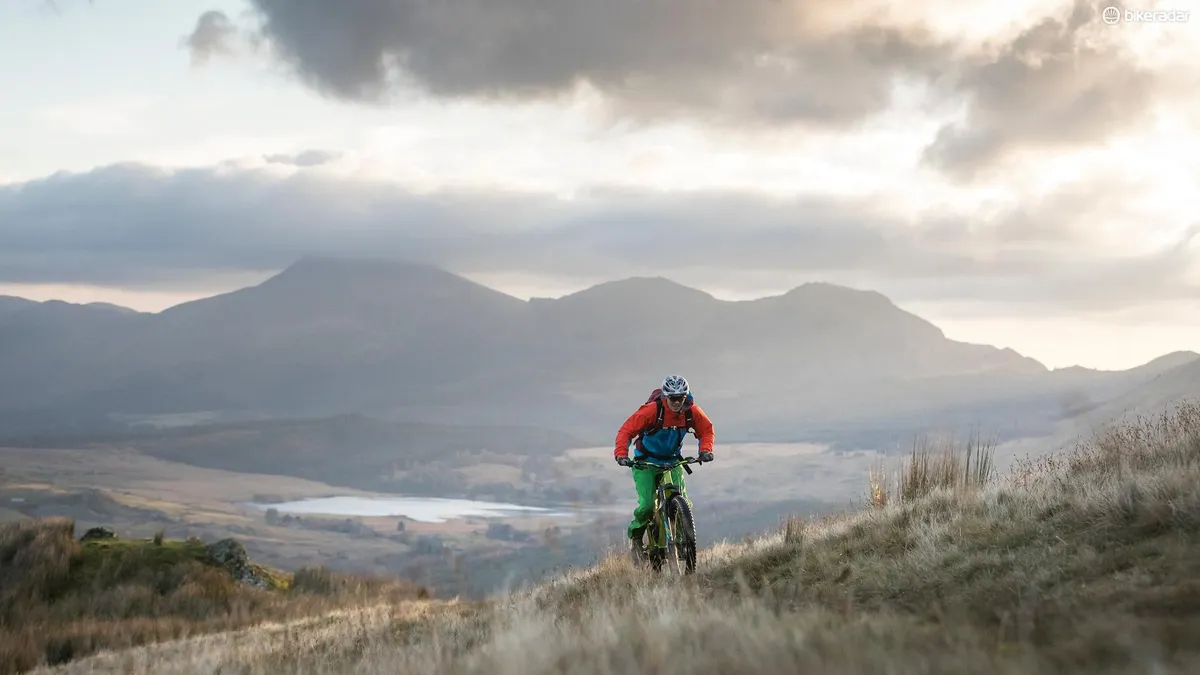
As it’s never a great idea to go messing about in proper mountains all alone, I was joined by What Mountain Bike's Rich Owen and Tom Marvin. After a day shaking down our bikes around the original trail centre, Coed Y Brenin, I’d already managed to break the Mondraker by smashing a pedal into a rock so hard it’d rounded out the crank. Happily, the very friendly folk at Beics Brenin lent me a crank from one of their hire e-bikes and it was time to head up the hill.
By and large, the Mondraker was making mincemeat of what was a pretty unpleasant climb
The only problem was that the original route we’d picked — namely up Rhyd Ddu and back down Ranger’s — was looking a little bit dicey thanks to some heavy snow overnight. Having recently attended a risk assessment course, we assessed the risk of trying to get very heavy bikes up a very exposed mountain ridgeline. So during our entirely non-risky fried breakfast we decided it was a level of risk that we’d find hard to justify to our bosses, should one of us suffer the misfortune of falling to their death.
With that in mind, we decided that we’d head past the bottom of the Ranger Path, go up and over Telegraph Valley into Llanberis and then try and get up the Llanberis Path before cutting back down Ranger's to complete the loop. With the snow line fairly visible through cloud, I made some quick calculations that there would definitely be a bit of snow we’d have to get through, but it wouldn’t be that bad. In this spirit of optimism, I chose to ignore the fact that pushing a hefty e-MTB through snow is quite different to carrying a normal bike, and that would be something we would deal with when we got there.
As ever with e-MTBs, our first little techy climb was an absolute pleasure. Having done it on a normal bike, the fact it didn’t make my breakfast revisit me this time is truly a credit to Messrs Bosch and Mondraker. It wasn’t just easier, it was also much more fun. The Bosch system gave a meaty amount of assistance in a timely fashion, turning techy and momentum robbing obstacles into fun trials challenges.
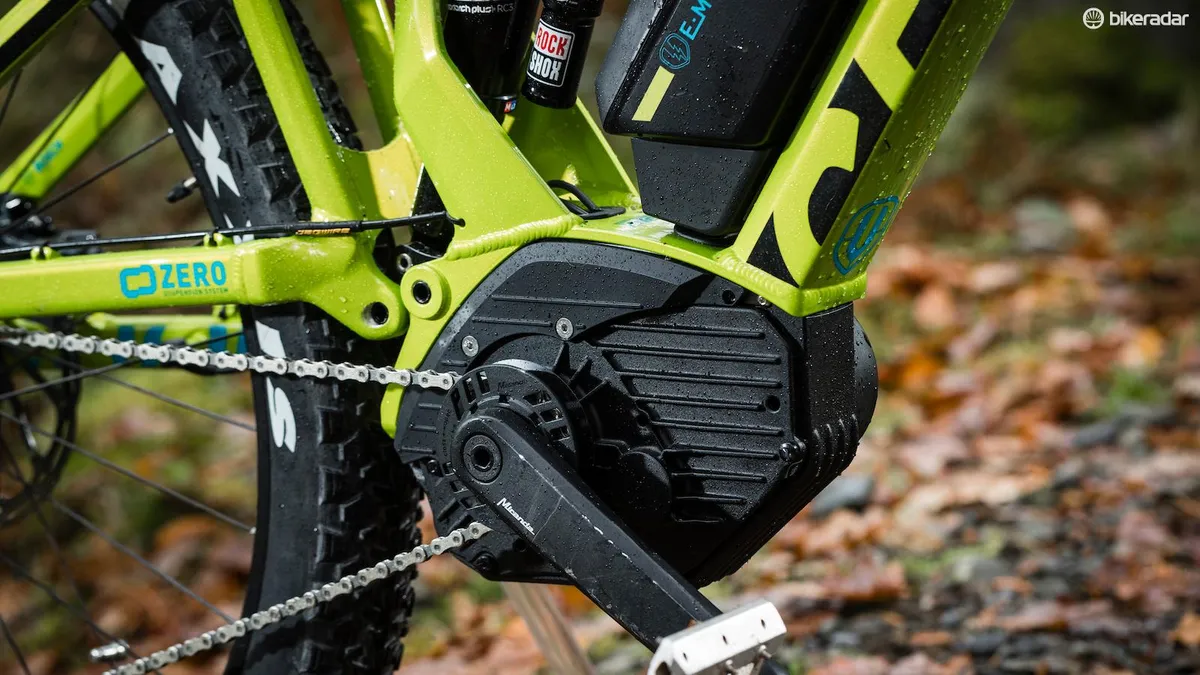
Despite running tubeless and hauling plenty of spare tubes — no easy feat as Plus inner tubes are pretty damn rare beasts — I was running the Maxxis Chronicle rubber at much higher pressure than I would do on a normal bike. Partly that was to help with the extra weight of the bike and partly that was to do with the fact I didn’t want to be stranded up a mountain that’s notorious for being tough on tyres.
That meant there was a bit more slipping and sliding than you’d expect from the semi-fat hoops and while on one muddy incline, with over 250W being transmitted through a lightly treaded tyre, the motive force completely failed and I had my first taste of how unpleasant pushing a very heavy bike up a very slippery and steep slope can be.
By and large, the Mondraker was making mincemeat of what was a pretty unpleasant climb; one section that’s usually a drawn out, calf muscle murderer of a push was dispatched with relative ease. I should point out to anyone that’s muttering something about ‘bloody motorbikes’, I was still putting in quite a lot of physical effort. In fact, I was breathing just as hard as I would have usually, but the motor meant I was getting to the top much more quickly and up things I probably wouldn’t have ridden. Despite the grey skies and soggy ground, we were all very pleased with ourselves despite being rather behind schedule thanks to regular pauses for photos.
Risk and reward

Our first descent beckoned and after a cheery chat with a hardy fell runner, who was very polite about us cheating our way to the top (“as long as you’re out here, that’s all that matters!”) it was time for our first descent.
Fully fettled and completely faffed out, we set out up the mountain for our attempt at the peak
Telegraph Valley is a very wide and incredibly fast trail that winds its way down to Llanberis and is most notable for the vicious waterbars made from local slate that help channel the rainfall off the path — if you had to design something to strike fear into rim manufacturers then you couldn’t do better than these.
Hauling down at speed and trying to time bunny hops to avoid the obstacles — while not sending yourself clean off the edge as the trail turns away from you — can prove challenging. It’s even more challenging if your bike is very heavy and you use flat pedals, so most of the way down I was bracing myself for the combination of a violent kick through my feet and an equally violent metallic noise that would be followed by the dispiriting sound of air making a bid for freedom. But despite the e-Crafty being a bit of a lump, the Zero Suspension proved lively rather than lumpen, and with more luck than judgement I hopped and skipped my way down in good order.
Curiously enough for someone that only tolerates climbing uphill to ride downhill on a normal bike, my feelings are reversed on an e-MTB. With the extra weight they feel much less reactive and enjoyable on a descent, while the draggy internal gearing of the Bosch motor means that you can’t keep up the same sort of speed that you can on a normal bike once you’ve exceeded their relatively low speed limit — something that happens on pretty much every descent worth the name. At the bottom I found myself aching to go back uphill again rather than buzzing from the downhill, and that's not a normal state of affairs for me, by any means.
The slow (ascent and) descent into madness
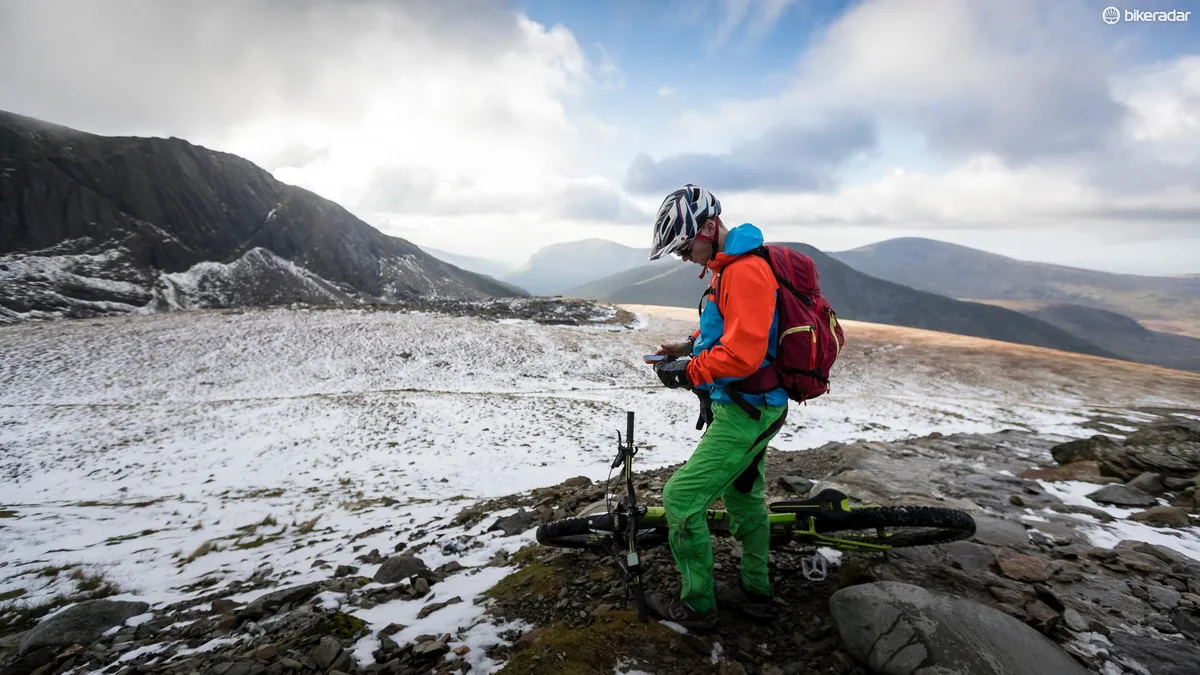
With Telegraph Valley duly dispatched, we rolled into Llanberis, where we made the most of our limited time and fixed a few mechanicals before nightfall. Fully fettled and completely faffed out, we set out up the mountain for our attempt at the peak.
The snow was packed thick between the rocks and the gradient was such that getting restarted once stalled was all but impossible
The first tarmac drag is a horrid wall of a thing. The first time I rode it as a youth I broke my shifter by pressing for a easier gear that simply wasn’t there, but it was a relative doddle on the Mondraker, with the tyres scraping and the Bosch motor whirring away loud enough to mute the fairly heavy breathing still required to reach the summit.
Although the GX drivetrain is relatively low rent, I didn’t really notice, and thanks to the SunRace 11-42T cassette there was plenty of climbing range. The only thing that created any concern was the rapidly depleting range being shown on the dinky Purion on-board computer's controller display — despite having nursed it around the loop in a low assistance setting thus far — well, that and the ramblers that swapped curiosities about our bikes with a firm belief that we’d not make it to the top thanks to deep snow and ice.
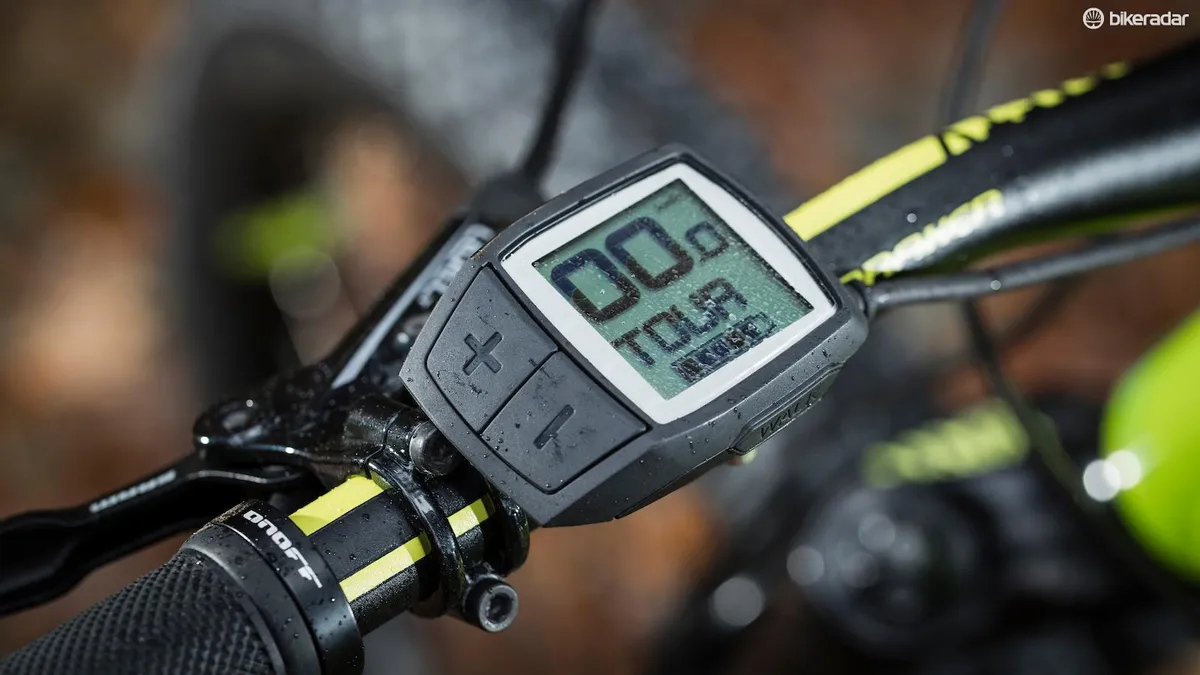
Having come too far to turn back and rather optimistically thinking that walkers might be underestimating both our determination and mad skillz, we all headed further up the hill. Once more, the Mondraker managed to turn punitive climbs on a normal bike into entertaining technical set pieces — merrily scrabbling up rock steps and ledges. While the Bosch motor’s input can seem overly fierce at first, once you’ve mastered the technique of a quick quarter crank stroke to boost you up and over an obstacle, it proves prodigiously capable and flatters your climbing prowess no end.
Compared to Tom, who was riding a Specialized Turbo Levo equipped with the much more mild mannered Brose motor, the Mondraker made ridiculously difficult sections a cakewalk. While Tom struggled to put down power when he needed it, my issue was the opposite, namely timing my inputs such that they didn't either overwhelm the surprisingly huge amounts of traction on offer from the fat tyres or simply kick the front end skywards when they dug in.
Soon enough, we reached the snowline. On a normal bike, it takes a solid two hours of effort to get to this point using hard graft, yet we’d done it in well under half that. Even so, that was not enough to overcome mother nature. The snow was packed thick between the rocks and the gradient was such that getting restarted once stalled was all but impossible. The only way we could continue was to shoulder the bikes and hike, but with such lardy machines and at least another 300 vertical metres in ever deeper snow to go before we got to the junction of our path and the way home, we had to retreat.
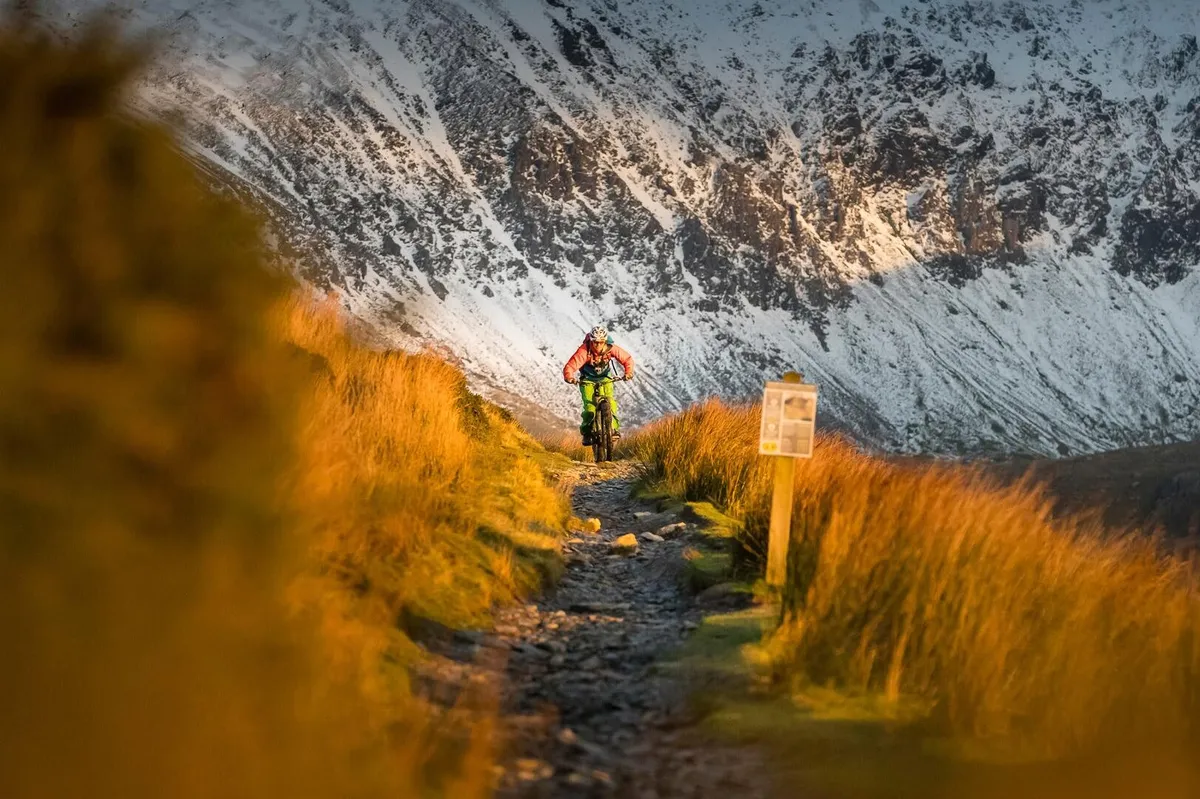
Despite my previous assertion that e-MTBs aren’t that much fun downhill, the Mondraker still brought a huge smile to my face as we clattered back down the raw and rocky trail. The epic reach on the large frame I was riding may have made it feel less reactive, but when it came to ploughing through insanely chundery terrain, this thing was simply incredible.
While the fork’s damping might be basic, the ratio of sprung to unsprung mass combined with the large tyre volume meant that it devoured the trail ahead with little fuss. It’s safe to say that in certain sections, I was probably more passenger than pilot, but with a clear trail ahead that’s simply all part of the thrill — this was until I had to stop to help Tom with yet another puncture.
Despite Tom running the choice Plus rubber of a 2.8” Maxxis Minion DHF, he suffered one blow out after another until we both ran out of tubes and CO2 cartridges to inflate them.
As a compatriot on many an adventure together, and a solid mate to boot, I did the only right thing in the circumstance and abandoned him to his fate on the hillside — pushing a 23kg bike a few miles down one of the best natural descents in the UK as the daylight faded. In my defence, I did promise to come and collect him from a cafe in Llanberis later, what with all our vehicles still parked on the other side of the mountain.
As the light grew dimmer, our photographer Russ and myself then met up with Rich, who had in turn abandoned Tom and ourselves. With the town almost in sight, he suffered the same plight as Tom with his tyres also falling victim to the combination of hefty e-MTB and unforgiving rock. When Rich never showed up at the bottom of the path, we ditched him by text message and hoped that somehow he and Tom would meet up and make it down — or die a good death and go down in a legend reminiscent of brave and cannibalistic Arctic adventurers. As Rich is vegan, we placed our bets on Tom and, using the last of our battery power, hooned it back up and over Telegraph Valley to our warm vehicles all while cackling and giggling. It’s the e-MTB adventurer way.
A whole lot of e-biking fun
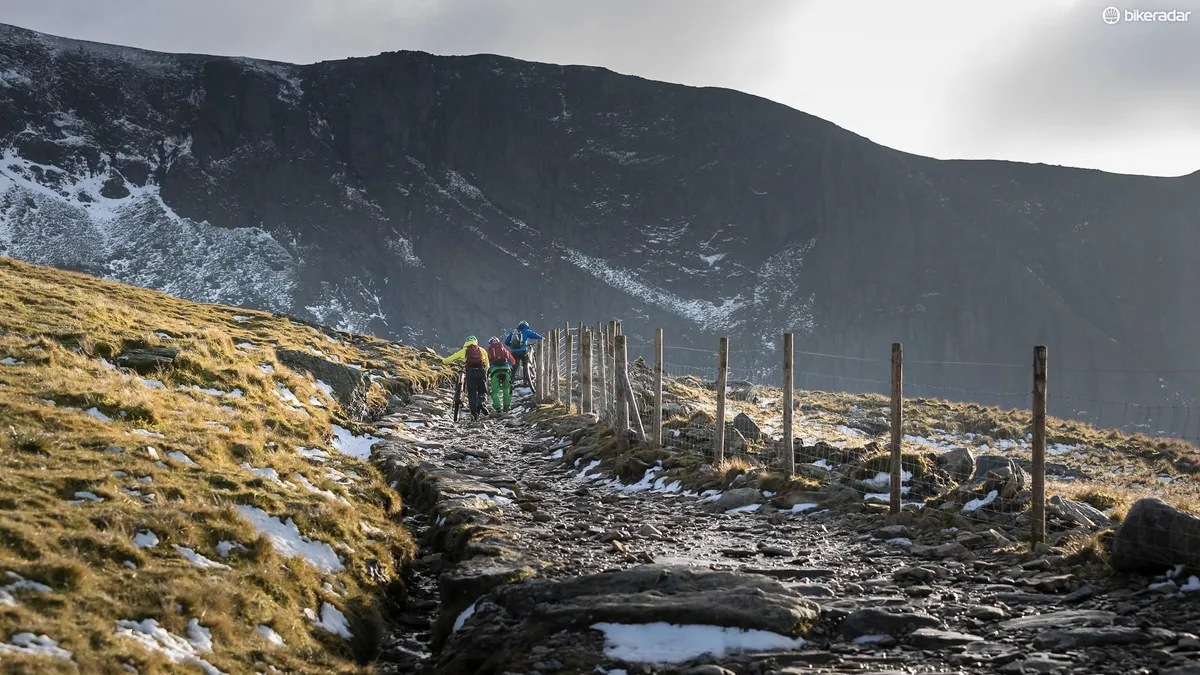
So, do motors make mountains easy? The short answer is no… and yes. Climbs that would have been arduous were easily shrugged off by the Mondraker's motor and with judicious use of the many modes the Bosch unit offered it was easy enough to complete a loop, with a serious amount of climbing that involved much less effort and far more fun on the uphills.
I could ride things that verged on the unrideable and sections that would usually have sucked my soul out, like a long forgotten sock being found under a bed by a vacuum cleaner, became a pleasurable challenge.
Downhill, the combination of weight plus the placid geometry of the Mondraker meant that, save for absolutely flat out sections of rocky carnage, it wasn't the most involving experience. Much as it pains me to admit it, e-biking might be one place where super stable geometry might actually hinder rather than help fun.
While the e-Crafty's entry-level kit certainly didn't impact on the ride experience, you'd have to be pretty immune to the high price tag to say it offers anywhere near good value for money, even in the spendy world of e-MTBing. As the fate of my colleagues proved, Plus tyres still have a long way to go before they're tough enough for a proper big mountain beating too.
That said, despite our abject failure to summit, numerous technical issues and general adventuring ineptitude, it was one of the most entertaining days on a two wheeled pedal vehicle I've ever had. E-MTBs aren't mountain bikes. They aren't motorbikes either. Whatever category they might fall into, they're a whole mass of fun and I dare you to try one and say otherwise.
